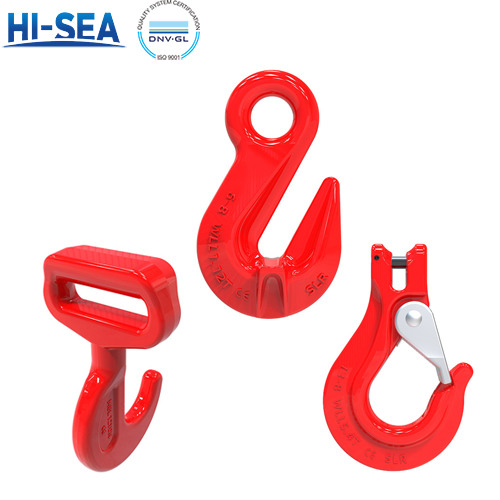
How To Choose The Right Lifting Hook?
Choosing the right lifting hook is crucial for ensuring the safety and efficiency of lifting operations. Lifting hooks are not only essential components that connect slings to loads, but they also play a critical role in lifting and moving heavy objects. Since different lifting tasks have varying requirements, understanding how to select the appropriate lifting hook can help avoid potential hazards and equipment damage.
Overview
To select the best type of hook for your sling, you should consider several factors:
Total Weight of the Load: Ensure the hook is rated for the weight you are lifting.
Type of Load or Material: Consider the shape, size, and material of the load. For example, sharp edges may require a different hook than a smooth, rounded load.
Type of Sling: Different hooks are suitable for wire rope, chain, or synthetic slings.
Sling Hitch: The type of hitch affects the load distribution and thus the suitable hook type.
Connection to the Load: Determine if you will use shackles or if the load has engineered lifting points designed for specific hooks.
Number of Lifting Points and Distance Between Them: Multiple lifting points may require different hooks or configurations to distribute the load evenly.
Sling Angle: The angle at which the sling meets the hook affects the load's weight distribution and the type of hook required.
When you inquiry the lifting hook, please provide the following information.
Type of Hook: Specify the type of hook required based on your application (e.g., clevis hook, eye hook, swivel hook).
Hook Material: Choose the material based on your lifting requirements (e.g., carbon steel, alloy steel, stainless steel).
Hook Capacity: Specify the safe working load (SWL) or capacity of the hook, considering the maximum weight of the load to be lifted.
Hook Size: Provide the size of the hook, including the throat opening, to ensure it fits your lifting equipment.
Hook Finish: Specify the finish required for the hook (e.g., painted, galvanized) to suit your environmental conditions.
Additional Features: If you need any additional features, such as latch kits or safety latches, specify them.
Quantity: Specify the quantity of hooks needed.
Application Details: Provide details about the application and lifting conditions to ensure the hook is suitable for your needs.





